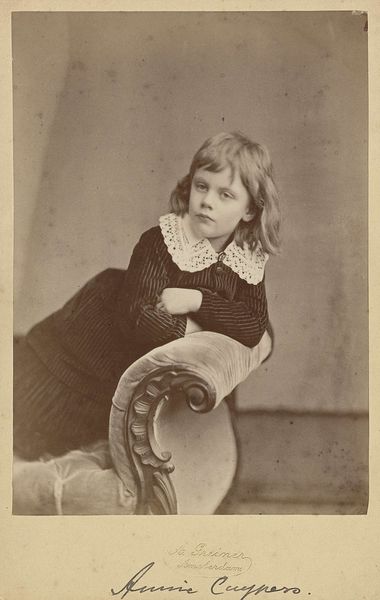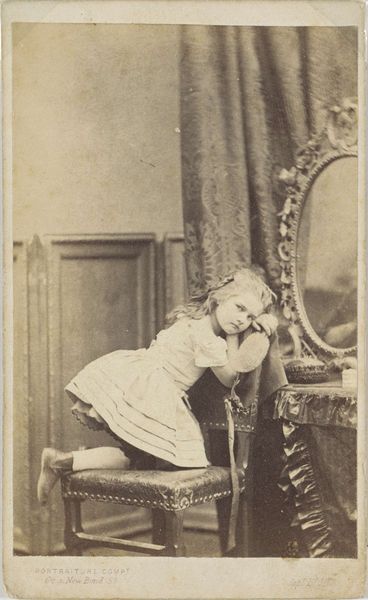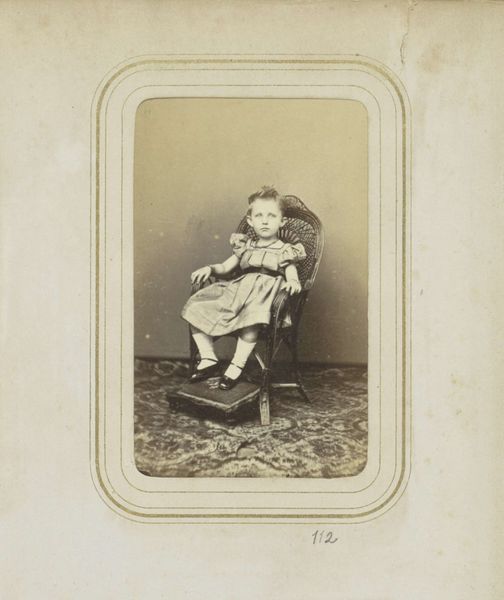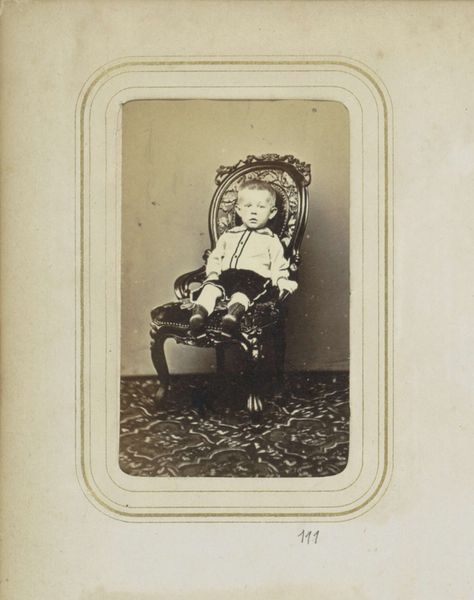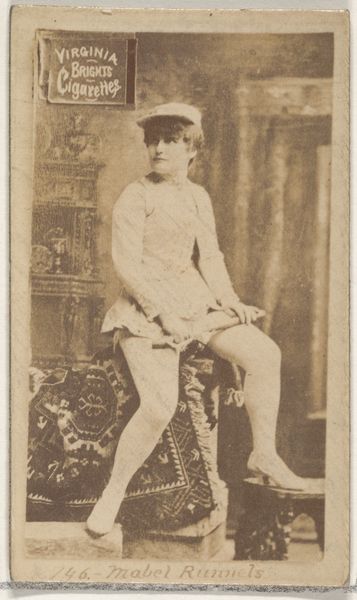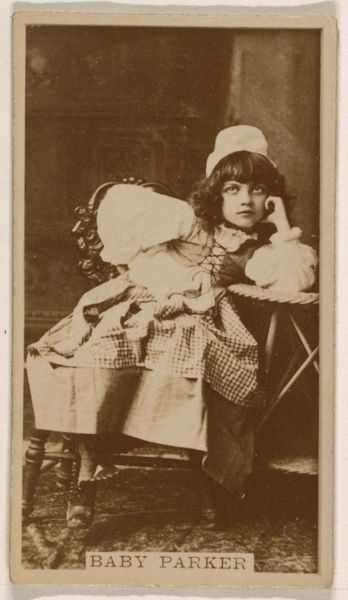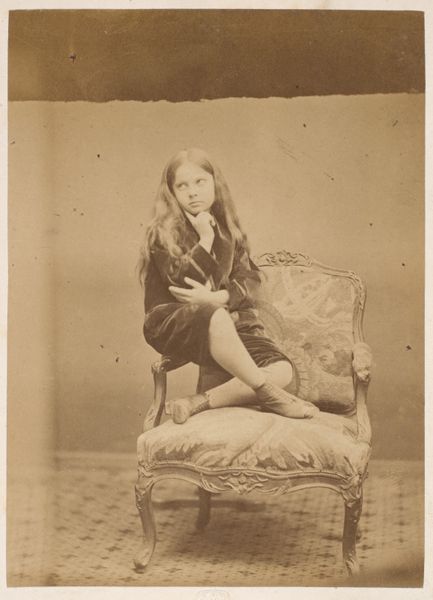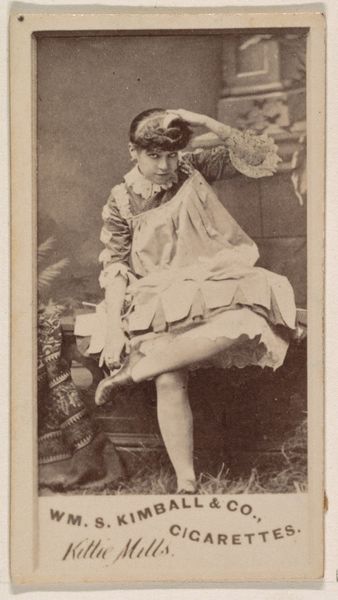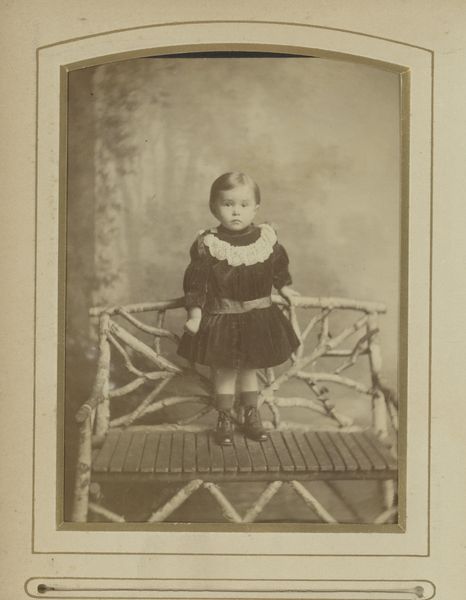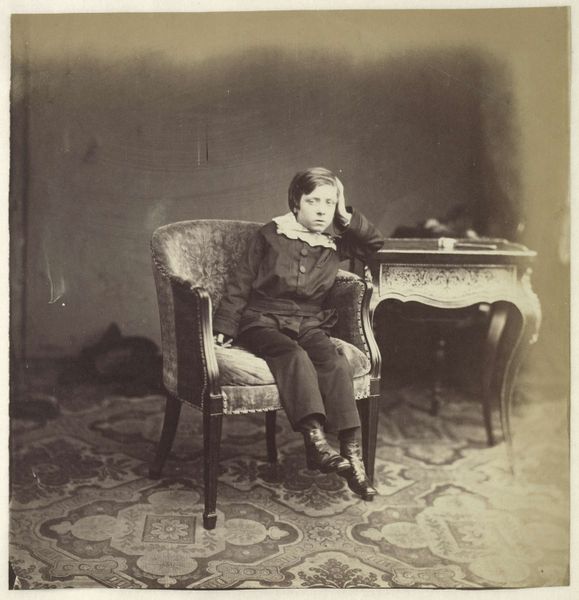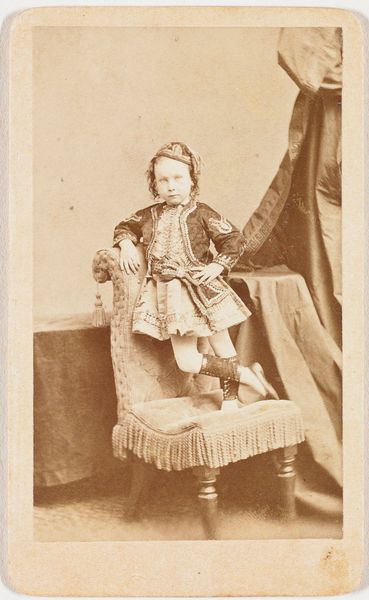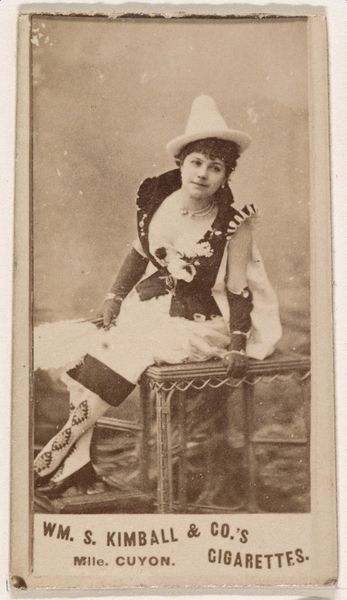
photography
#
portrait
#
photography
#
portrait reference
#
19th century
#
portrait drawing
Dimensions: height 16.6 cm, width 10.7 cm
Copyright: Rijks Museum: Open Domain
Editor: This is a photograph called "Portret van Annie Cuypers," made sometime between 1850 and 1899, now at the Rijksmuseum. It looks like a little girl posing in a very formal setting, almost staged, and there's something kind of melancholic about her expression. What do you see in this piece that maybe I'm missing? Curator: It's precisely that staging that speaks volumes. Nineteenth-century photography was deeply entwined with social aspirations and the performance of identity. How do we understand this image as a carefully constructed presentation for public consumption? The studio setting, the child's dress, even the furniture – they're all props in a carefully orchestrated tableau. What kind of social role do you think this family aspired for their child? Editor: I guess they wanted her to be seen as refined, upper class? It's so different from how we casually take photos now. Curator: Exactly. Consider the power dynamics at play here. Photography, in its early days, was largely a privilege of the wealthy. Having one's portrait taken was a statement of social standing. This image, beyond being a mere depiction of a child, it reflects the aspirations of the parents, mediated through the photographer’s lens, within a particular historical context. Are we really looking at Annie, or an ideal of childhood innocence and bourgeois respectability? Editor: So, it’s less about capturing reality and more about creating an image, a narrative? Curator: Precisely. Think of this as a visual document, one that reveals more about societal values and power structures of the time than the individual sitter. These carefully constructed images become powerful cultural artifacts. They become part of our visual culture. Editor: That's fascinating! I was just seeing a picture of a girl, but it’s really a window into a whole social world. Curator: Yes, and that’s how art history can reshape our understanding. These portraits offer glimpses into constructed identities, shaped by prevailing social forces and the evolving role of photography itself.
Comments
No comments
Be the first to comment and join the conversation on the ultimate creative platform.
